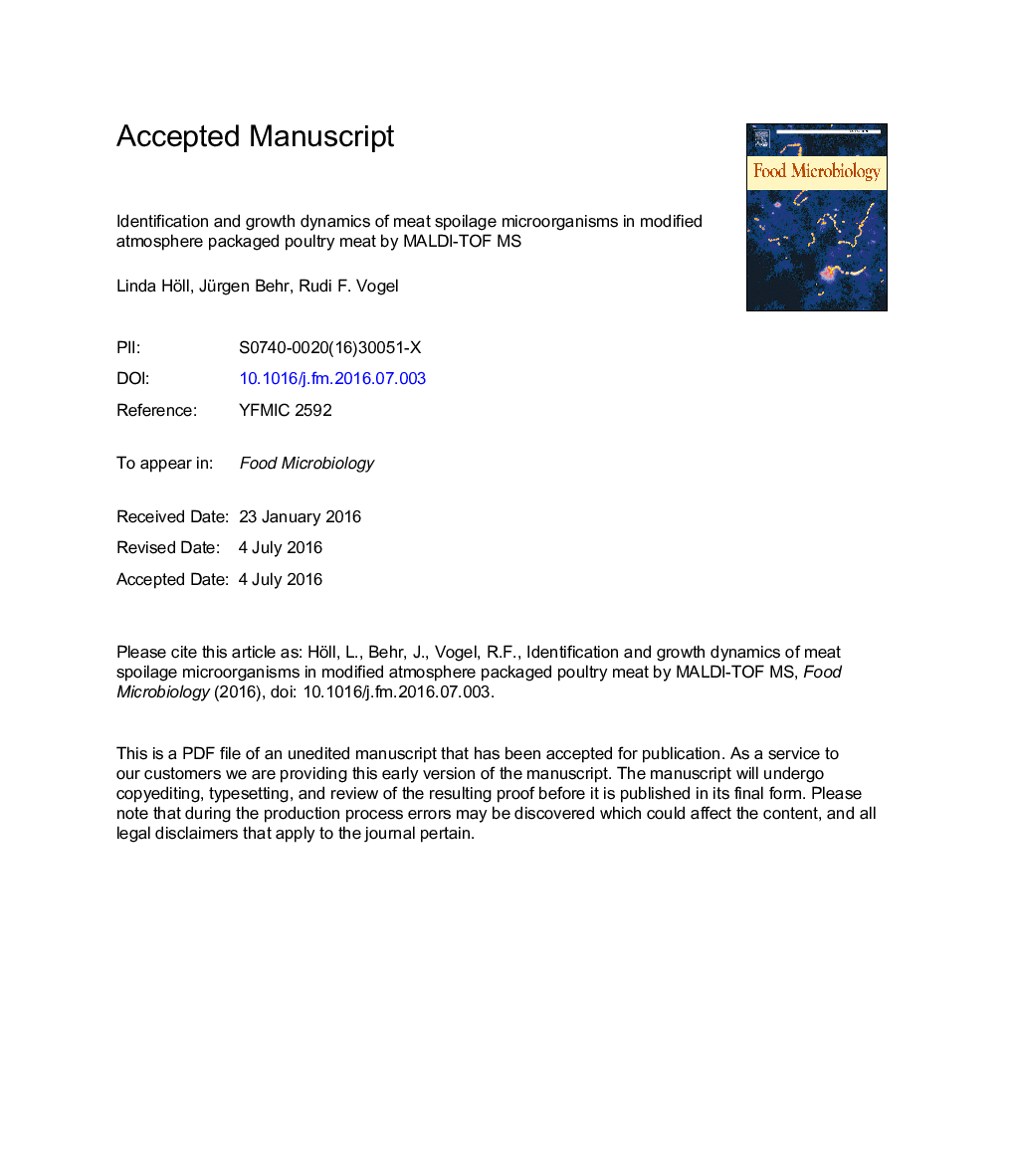| Article ID | Journal | Published Year | Pages | File Type |
|---|---|---|---|---|
| 6288348 | Food Microbiology | 2016 | 34 Pages |
Abstract
Modified atmosphere packaging (MAP) is widely used in food industry to extend the microbiological shelf-life of meat. Typically, poultry meat has been packaged in a CO2/N2 atmosphere (with residual low O2). Recently, some producers use high O2 MAP for poultry meat to empirically reach comparable shelf lifes. In this work, we compared spoilage microbiota of skinless chicken breast in high (80% O2, 20% CO2) and low O2 MAP (65% N2 and 35% CO2). Two batches of meat were incubated in each atmosphere for 14 days at 4 °C and 10 °C. Atmospheric composition of each pack and colony forming units (25 °C, 48 h, BHI agar) of poultry samples were determined at seven timepoints. Identification of spoilage organisms was carried out by MALDI-TOF MS. Brochothrix thermosphacta, Carnobacterium sp. and Pseudomonas sp. were the main organisms found after eight days at 4 °C and 10 °C in high O2 MAP. In low O2 MAP, the main spoilage microbiota was represented by species Hafnia alvei at 10 °C, and genera Carnobacterium sp., Serratia sp., and Yersinia sp. at 4 °C. High O2 MAP is suggested as preferential gas because were less detrimental and pathogens like Yersinia were not observed.
Keywords
Related Topics
Life Sciences
Agricultural and Biological Sciences
Food Science
Authors
Linda Höll, Jürgen Behr, Rudi F. Vogel,
